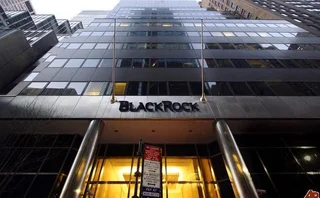

Libor takes a back seat as insurers await regulatory clarity
Eiopa silence on discount curves holds back transition plans
Need to know
- The European Insurance and Occupational Pensions Authority (Eiopa) sets the discount curves insurers use to value their liabilities.
- These are based on Libor-linked swaps, but the benchmark is expected to stop being published at some point after the end of 2021.
- In the sterling swap markets, Sonia is fast becoming as liquid as the outgoing benchmark.
- Eiopa is silent on whether it plans to change the discount curve to reference Sonia and other Libor replacements.
- This leaves UK insurers in a bind – move their liability hedge to Sonia early and create basis risk, or remain in a market that will become less liquid over time.
- Despite pressure from UK regulators, many firms are waiting for word from Eiopa.
- But not all. Andrew Kenyon at NatWest Markets says some insurers are choosing basis risk over liquidity risk.
The looming, not-quite-certain death of Libor exposes investors to multiple risks, but UK insurers face a unique challenge.
European regulators require insurers to value their liabilities using discount curves derived from Libor-linked swaps. At the same time, UK regulators are pushing financial services firms to start using new risk-free rates (RFRs) such as Sonia – the anointed successors to the old, scandal-struck benchmark. Insurers that adopt Sonia swaps as a liability hedge before the official discount curves are changed will create a mismatch between the two, inviting capital add-ons.
On the other hand, waiting too long may just be delaying the inevitable, leaving the insurer with Libor-linked assets and hedges – particularly in sterling – that belong to a doomed, shrinking market.
The industry is now waiting for the European Insurance and Occupational Pensions Authority (Eiopa) to say whether, and when, it will change discount curves to reference Sonia and other RFRs.
With broadly similar liquidity in the Libor and Sonia markets and the volatility of the basis between the two rates subsiding in recent months, firms are looking more closely at their transition plans, says Andrew Kenyon, a director in insurance and pensions within the financing and risk solutions division at NatWest Markets. Some now see an early move as the lesser of two evils.
“Many of the insurers we speak to have gradually become more comfortable with the regulatory risk – Eiopa discount curves and the potential for Libor-Sonia basis risk capital requirements – relative to the risk of transitioning large and increasingly illiquid Libor positions at the same time as peers,” says Kenyon.
An insurer’s Libor exposures may come from its asset portfolio, which could contain floating rate notes (FRNs), loans and other securities referencing the benchmark. Exposure can also come from Libor-referencing swaps, swaptions or other instruments that hedge, among other things, changes in the value of liabilities, which are driven by the discount curve.
These are big portfolios. According to Eiopa’s report of aggregated balance sheet numbers, there were €59.2 billion of derivatives assets across 106 UK entities in the first quarter of 2019, and €100.7 billion of loans and mortgages. The figures do not disaggregate interest rate or Libor-linked derivatives.
In a speech on May 14, David Rule, executive director of insurance supervision at the UK Prudential Regulation Authority, acknowledged the situation UK insurers are in.
Many of the insurers we speak to have gradually become more comfortable with the regulatory risk relative to the risk of transitioning large and increasingly illiquid Libor positions at the same time as peers
Andrew Kenyon, NatWest Markets
“We understand the challenges this poses to insurers, and we are working constructively with Eiopa and others to address these issues,” said Rule. “We encourage insurers to continue to focus on the actions within your control, such as identifying where Libor exposure is on your balance sheets, engaging with counterparties, and preparing for operational changes.”
The same sentiments appeared in the thematic summary of responses to so-called ‘Dear CEO’ letters sent by the UK Financial Conduct Authority (FCA) to the heads of major banks and insurers in September last year. The letters asked firms for details of their Libor transition plans.
But while this is a growing concern for UK insurers and UK arms of international insurers, many were unwilling to talk publicly about their plans for this article.
While some firms such as Direct Line and Chubb have started looking at the issue, consultants say most do not see it as a priority, and the lack of clarity around Eiopa's policy on the discounting curve has put the brakes on transition plans.
Curve rules
The problem begins with Solvency II, which states that liabilities must be discounted using specific curves set out by Eiopa.
The regulator publishes curves in a variety of currencies at the start of every month, derived from the most liquid interest rate swaps. Currently these are linked to interbank offered (Ibor) rates such as sterling Libor and Euribor.
But Ibor swaps in many currencies are in the process of being phased out. Following the Libor rigging scandals and growing concerns that panel banks could flee the rate, in July 2017 the FCA announced banks had voluntarily agreed to support the benchmark until the end of 2021 – postponing an abrupt, calamitous death. The FCA oversees the administrator of the sterling, Swiss franc, US dollar, euro and yen Libor benchmarks.
As a result, regulators are warning market participants not to expect these benchmarks to survive long beyond 2021, and instead to start using products linked to RFRs.
The UK market had a ready-made RFR in Sonia, which is the floating leg on the country’s overnight indexed swap (OIS) market, so has been the country most advanced in the transition off Libor. Market participants say liquidity in the Sonia swap market is now almost the equal of sterling Libor, especially in shorter maturities. Liquidity is also said to be growing in longer-dated trades.
Article 77a of Solvency II requires Eiopa to use a risk-free interest rate term structure “based on relevant financial instruments traded in deep, liquid and transparent markets” to build its discount curve. But despite pressure from market participants, most recently via a letter from the head of the Bank of England-convened working group on sterling RFRs on July 9, Eiopa has not yet decided to ditch its sterling Libor curve for Sonia.

At the time, an Eiopa spokesperson said the authority would respond “as soon as possible”. The regulator says it is still analysing the request.
Other currencies are even further away. The euro discount curve is set with reference to Euribor-linked swaps, which are not due to be phased out any time soon. Liquidity is expected to shift eventually to a brand-new benchmark, the euro short-term rate, or €STR. Swaps linked to €STR are set to begin clearing at LCH from October 21.
Documents from an August 29 meeting of the euro risk-free rate working group say a decision by Eiopa to move to new RFRs is “not expected to happen in the near future”. The topic is not mentioned at all in Eiopa’s 2019 work programme.
A decision to move would require a change of regulation to avoid insurance liabilities ballooning.
Solvency II specifies that discount rates be adjusted downwards to back out the effect of credit risk embedded in the Ibor benchmarks. The final discount rate equals the Ibor-referencing interest rate swap rate reduced by half the average difference of the swap’s floating leg and the rate on an equivalent overnight indexed swap over a one-year period. The primary text of the regulation specifies that the adjustment has to be between 10 and 35 basis points.
So, if Eiopa switched to an RFR curve linked to Sonia swaps, which represent the overnight rate, there would be a double hit. First, as Sonia is lower than Libor, insurers that had stuck with Libor assets and hedges would suddenly have to discount their liabilities by a smaller number, leading to higher valuations.
The kicker is that even though the floating leg on the swap would also be the overnight rate, the adjustment calculation would still need to incorporate the minimum 10bp downwards shift baked into the regulations, increasing liability values even further.
Market participants say the rules need to change, but are under no illusions about how easy or quick this would be.
Basis risks
With no change from Eiopa on the horizon, UK insurers are in a tough spot.
If insurers move their assets and liability hedges to Sonia before Eiopa changes the discount curve, their liabilities would continue to be discounted at Libor, creating basis risks. For firms using their own internal models approved by regulators, this may create the need to hold additional capital.
Lotfi Baccouche, partner at consultancy Parker Fitzgerald, says some people haven’t quite grasped the impact of the change.
“From a Solvency II perspective, some actuaries may take the simplistic view it’s just swapping one rates table for another and adjusting the models accordingly. It is not as simple as that,” says Baccouche.
From a Solvency II perspective, some actuaries may take the simplistic view it’s just swapping one rates table for another and adjusting the models accordingly. It is not as simple as that
Lotfi Baccouche, Parker Fitzgerald
Even if Eiopa changes the discount rate, it will still take time for insurers to go through the necessary approval processes to change solvency models internally to accommodate a new rate.
Firms using the standard formula may not face a capital hit, however.
“Under the standard formula, there’s no real explicit basis risk stress between Sonia and Libor, for example,” says Simon Richards, head of insurance solutions at Insight Investment. “So if you did have Sonia swaps, and you had a Libor discount rate, standard formula firms wouldn’t pick up any extra capital requirements in their Pillar I valuation, although some firms might stress this as part of their Own Risk and Solvency Assessment.”
If liability discounting moved to Sonia, the idea would also be to move assets to the same rate to ensure both sides of the balance sheet match. These products are few and far between currently, however, with FRNs the only cash asset that has really made the jump to Sonia for new issuance.
On the other hand, if insurers stick with Libor swaps and assets, they will eventually have to transition them off Libor before the rate ceases. Transitioning swaps contracts from Libor to RFRs will result in some form of valuation transfer, and may become more and more difficult towards the 2021 deadline as other firms try to do the same thing simultaneously.
Cash assets are arguably more difficult, as they cannot be repapered en masse like swaps and need permission from bondholders. To date, only one bond – issued by Associated British Ports in June – has been changed from sterling Libor to Sonia.
As NatWest’s Kenyon says, some insurers are getting increasingly comfortable with running this basis risk on the liability hedging side, compared with the pain of having to change their Libor portfolios over at a later date.
Liquidity issues
Any move to transition assets and derivatives hedges into the equivalent RFR alternative is also a bet on timing and where market risk lies.
Move too soon, and insurers could be entering a less liquid market in some products, particularly on the swap side. Insurers need long-dated hedges to match their lengthy liabilities, but liquidity on the longer end of the curve has traditionally been a problem for RFRs, including Sonia.
For example, liquidity is especially important for unit-linked guarantee writers that tend to take a more “dynamic hedging approach to replicate long-dated guarantees”, says Neil Dissanayake, director of European trading at actuarial consultancy Milliman.
“For dynamic hedging, liquidity is particularly important, because the nature of the strategy relies on you being able to be trade fairly frequently. Switching to OIS, which is a less liquid market for longer tenors, may present more challenges to insurance companies relying on dynamic hedging, compared to other companies that tend to have fairly static hedge portfolios,” Dissanayake adds.
Other market participants though note that longer-end liquidity has steadily improved in the Sonia market and is not wildly dissimilar to Libor.
But waiting too long to transition could mean transitioning at the same time as the rest of the market, potentially resulting in higher costs and a worse rate.
Notably absent in the approved RFR space are swaptions, which investors use to manage interest rate volatility. Although some banks have begun to offer and print Sonia-based swaptions, the nascent market will take time become liquid, and insurers will be forced to use Libor-based alternatives.
For dynamic hedging, liquidity is particularly important, because the nature of the strategy relies on you being able to be trade fairly frequently
Neil Dissanayake, Milliman
Until exact swaption specifications become clear, asset managers are unable to build out the necessary infrastructure to accommodate those trades and manage the risk, says Robert de Roeck, head of structured solutions at Aberdeen Standard Investments.
The fact that each currency group is transitioning off Ibor rates at different speeds adds additional complexity to the situation, even if UK insurers’ predominately sterling liabilities help insulate them from some of this.
“The ability for any investor to make a transition away from their Libor exposure is a function of the local market and the availability of replacement instruments,” says de Roeck. “Different markets will move at different paces, but it will be the arrival of appropriate replacement instruments that will ultimately dictate transition timescales.”
Another complicating factor is Brexit. When the UK leaves the European Union, the PRA will take over the setting of discount curves for UK insurers. Given the PRA’s keenness to support Libor transition, it’s likely the regulator would move faster than Eiopa to adopt Sonia as the discount curve. But with the UK's Brexit timetable unclear, so is the timing of any such changeover.
All this comes as firms prepare for the new accounting regime for insurance contracts, International Financial Reporting Standard (IFRS) 17, which is currently set to become effective from the start of 2021. This requires insurers to build their own discount curves for accounting valuations, which means firms will have to choose whether to stick with Libor curves and be more aligned with their current regulatory approach, or move to RFRs like Sonia.
“The key challenge is, how are they going to come up with the discount rates, reprice their products and restructure their hedges? If I’m implementing IFRS 17 now, and it’s a two-year project, I’d know immediately it’s going to be a serious conundrum,” says Parker Fitzgerald’s Baccouche.
Having to use dissimilar rates for accounting and Solvency II calculations means the two derived balance sheets will behave differently as market conditions change, further increasing complexity until the regulatory discount rate becomes clear.
Planning ahead
But while it’s a growing concern, Libor transition isn’t necessarily at the top of the industry’s inboxes.
Insight’s Richards says insurers have indeed been analysing Libor exposures throughout their businesses over the past six to 12 months.
“They’re much more aware of the risk now, and they've got plans to address them. But for many firms it’s more a case about having plans about what they will do, rather than having made significant changes at the moment. I think the biggest hold-up is this liability discount rate issue,” he says.
With new accounting standards coming into force in 2022, the UK’s impending exit from the European Union, and the challenges of daily business, Libor transitioning falls among a variety of concerns and deadlines.
For many firms it’s more a case about having plans about what they will do, rather than having made significant changes at the moment
Simon Richards, Insight Investment
“They’re aware of it. It’s going to have some impact on them, clearly,” says William Gibbons, a director at PricewaterhouseCoopers in London. “But in the context of all the other things they’re doing and what else is going on with their businesses, is it necessarily number one? I’m not sure it is.”
Some firms have nevertheless started the process. Jim Hardie, director of investment management and treasury at Direct Line Group, says the company has identified the primary areas where Libor discontinuation could have an impact on in-house activities and has been monitoring developments around the identification and development of replacement RFRs.
“Separately, analysis has been undertaken to understand the impact of any basis risk between different RFRs on the valuation of liabilities,” he says.
Chubb has also taken steps to reduce Libor exposures in its debt liabilities, buying back $1 billion of its US dollar Libor-linked FRNs in April 2018, according to its latest annual report. But on the investment side, the report said only that it was “monitoring industry efforts via our external investment managers to establish alternatives and transition away from Libor by the end of 2021”.
Only users who have a paid subscription or are part of a corporate subscription are able to print or copy content.
To access these options, along with all other subscription benefits, please contact info@risk.net or view our subscription options here: http://subscriptions.risk.net/subscribe
You are currently unable to print this content. Please contact info@risk.net to find out more.
You are currently unable to copy this content. Please contact info@risk.net to find out more.
Copyright Infopro Digital Limited. All rights reserved.
As outlined in our terms and conditions, https://www.infopro-digital.com/terms-and-conditions/subscriptions/ (point 2.4), printing is limited to a single copy.
If you would like to purchase additional rights please email info@risk.net
Copyright Infopro Digital Limited. All rights reserved.
You may share this content using our article tools. As outlined in our terms and conditions, https://www.infopro-digital.com/terms-and-conditions/subscriptions/ (clause 2.4), an Authorised User may only make one copy of the materials for their own personal use. You must also comply with the restrictions in clause 2.5.
If you would like to purchase additional rights please email info@risk.net
More on Investing
BlackRock appoints Pierre Sarrau as chief risk officer
Current CRO Edward Fishwick will be head of research at BlackRock’s RQA group
Japan’s yen swaps go global
JSCC isn’t just clearing swaps, it is clearing the way for the next stage of Japan’s financial evolution
How Bessent learned to stop worrying and love the T-bill
Short-dated issuance shows no signs of slowing. Some fear it could end badly.
Why a Trumpian world could be good for trend
Trump’s U-turns have hit returns, but the forces that put him in office could revive the investment strategy
Hedge fund holdouts boost euro steepener bets into year-end
After some investors took profits in September, those that stayed in the trade are now doubling down
Dutch pensions weigh hedge unwinds ahead of transition
As January 1 nears, Dutch pension funds consider unwind timing to avoid rush to the exit in thin year-end liquidity
BlackRock, Citadel Securities, Nasdaq mull tokenised equities’ impact on regulations
An SEC panel recently debated the ramifications of a future with tokenised equities
Institutional priorities in multi-asset investing
Private markets, broader exposures and the race for integration








